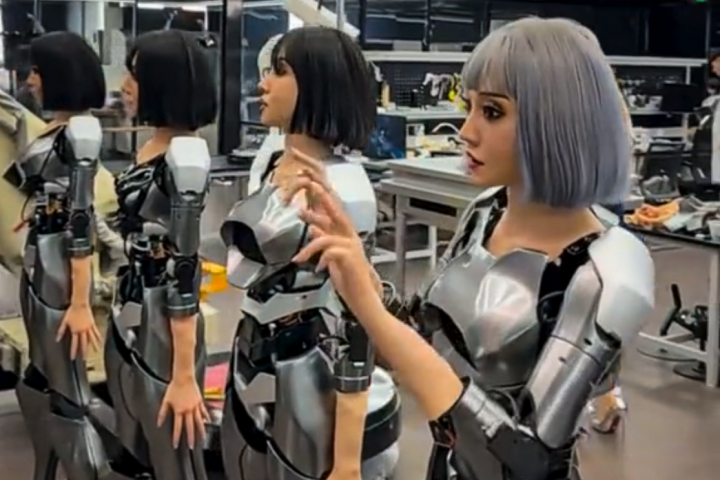September 18, 2008 A century ago, most school children sat on the floor, with tables and chairs following and eventually giving way to rudimentary desks. A century from now, one wonders how far we’ll have progressed in creating an environment most conducive to nurturing the minds of our most precious resource. Researchers at the Technology-Enhanced Learning Research Group (TEL) at Durham University in the United Kingdom are designing new learning environments using interactive multi-touch desks that look and act like a large version of an Apple iPhone.
See the official overview here and a video of the new desk here.
The team observed how students and teachers interact in classes and how Information Communications technology (ICT) could improve collaboration. They then set about designing an interactive classroom solution called ‘SynergyNet’ to reflect TEL’s aims of achieving active student engagement and learning by sharing, problem-solving and creating.
The team has linked up with manufacturers to design software, and desks that recognize multiple touches on the desktop, using vision systems that can see infrared light.
SynergyNet will integrate ICT into the fabric of the classroom. The new desk with a ‘multi-touch’ surface will be the central component; the desks will be networked and linked to a main smartboard offering new opportunities for teaching and collaboration.
Several students will be able to work together at a desk as the desks allow simultaneous screen contact by multiple users using fingers or pens. Durham researchers want to create a ‘natural way’ for students to use computers in class. The system encourages collaboration between students and teachers, and a move away from teacher-centric learning.
The government’s ICT vision aims to: ‘transform teaching, learning and help to improve outcomes through shared ideas, more exciting lessons… and to engage ‘hard to reach’ learners, with special needs support, more motivating ways of learning, and more choice about how and where to learn.’
Dr. Liz Burd, Director of Active Learning in Computing at Durham University says: “Our vision is that every desk in school in 10 years time will be interactive. IT in schools is an exciting prospect - our system is very similar to the type of interface shown as a vision of the future in the TV series Star Trek!
“We can now by-pass the ‘move-to-use’ whiteboard. The new desk can be both a screen and a keyboard, it can act like a multi-touch whiteboard and several students can use it at once. It offers fantastic scope for more participative teaching and learning.
“The system will also boost equal access in school. In IT, we have found that males have been the dominant actors - interactive classrooms will encourage more females to take part in lessons. It will also enable more disabled students to participate in lessons and allow more personalized learning.”
A single work-desk can operate as a set of individual work spaces and/or a large screen allowing students to cooperate on a task. The software will be used to link everything together in a fully interactive classroom system of desks and smartboards.
Teachers will be able to instantly display examples of good work by students on the main smart-board; tasks could also be set for each individual desk. Numeracy tasks could include exercises where pupils have to split a restaurant bill by sliding visual representations of money into a group space.
After testing the system with students of all ages, the software will be available to schools for free as open source code.
TEL in Computing is the largest funded research study to look at multi-touch interactive systems for education. £1.5 million has been awarded to Durham researchers who will design the system and software, and test it with students from primary and secondary schools, and university students over the next 4 years.
Dr. Andrew Hatch from Durham’s Technology-Enhanced Learning Research Group adds: “It changes the move-to-use principle; instead the computer becomes part of the desk. It’s a practical change that will provide a creative interface for life-long learning for all students!”
The Computing Department at Durham University leads TEL and England's only Centre of Excellence in Teaching and Learning (CETL) in Computer Science, called Active Learning in Computing (ALiC). This centre seeks to facilitate a shift towards far higher levels of active student engagement, where knowledge is obtained by sharing, problem-solving and creating, rather than by passive listening. Providing novel facilities and encouraging new ways of working will be a central focus.
The Active Learning in Computing research is funded by the EPSRC - Engineering and Physical Sciences Research Council; the ESRC - Economic and social research council, and the TLRP - Teaching and learning research programme.
The Durham University Techno café:http://www.dur.ac.uk/computer.science/undergraduate/technocafe/














